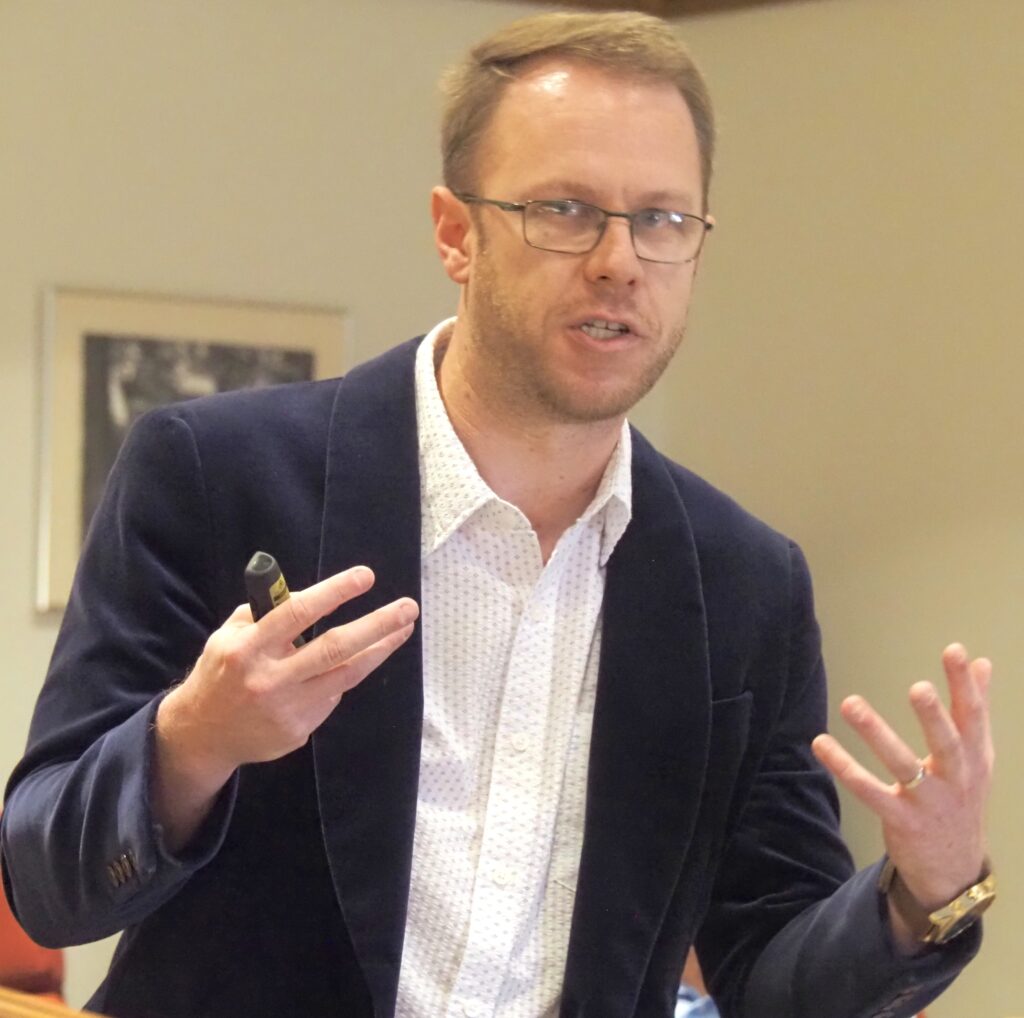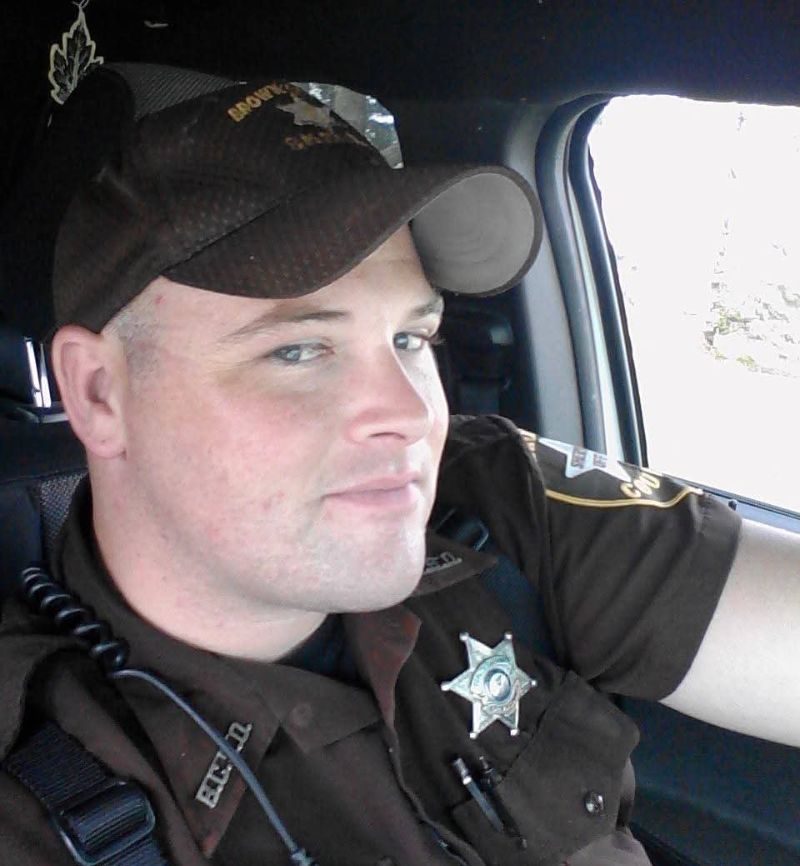‘Let’s talk some more’: Reactions mixed as Quincy takes first glance at proposed indoor sports complex

QUINCY — Questions were asked Tuesday night about staffing, playing surfaces, the amount of money possibly generated and the types of sports that could be played at a proposed indoor sports complex in Quincy.
However, the biggest question about a facility that could cost at least $30 million is: Who’s going to pay for it? Several ideas were tossed out during the public presentation of a feasibility study in City Council chambers.
Gary Johnson, director of business development for ARCO National, a construction company from Richmond Heights, Mo., said figuring out what will be included in the proposed facility will determine the cost. The Quincy proposal — to be built at a yet-to-be-determined site — calls for hardwood floors to accommodate at least eight full-sized basketball courts and double that number for volleyball.
“There’s Chevy Malibus, right? And there’s Lamborghinis. They’re both cars. It just depends on what you put in it,” he said. “But (the cost of a) 100,000-square-foot complex, it’s probably somewhere in the $30 million to $35 million range. It’s real money to build to build these things. It could be a little less than that, depending on what ends up going in them.
“On paper, this looks like it makes sense. Economically, it looks like it makes sense, but we still have some things we would have to work through.”

Eric McCafferty is a regional vice president of strategic development for The Sports Facilities Companies, a Clearwater, Fla., company that has developed and operates 75 complexes around the country. He said several communities have helped pay for similar facilities by implementing a food and beverage tax.
Quincy has a 1 percent food and beverage tax that sunsets this spring. The Quincy City Council had a first reading on Monday of an ordinance that would continue that tax.
“When you’re driving in thousands of people who aren’t coming here today, that number goes up,” Johnson said.
Johnson also said that because Quincy is “so strong financially,” it could go on the secondary market.
“Some people have lots of money, and they want to invest in municipal investments, which are very secure,” he said. “There is something called an appropriations lease that we see get done, and what that means is that the city is able to put up a facility, and basically, either the group that runs the facility is a nonprofit, or the city will go out and secure the funds in the secondary market, and then they’ll lease it back to the city. By doing that, it doesn’t count against the bond capacity of the city.
“I’m not a financial expert. That’s not my area, but I will tell you, we’re seeing these all over the country get done that way. There are some creative ways to get them done.”
Eric Entrup, a 1st Ward alderman who also has three daughters who are volleyball players and played in several facilities similar to the one proposed, wasn’t keen on funding the entire facility with tax dollars.
“That’s not a reality,” he said after the meeting. “I don’t really think that’s a possibility myself. I think it needs to be privately (funded). It needs to have a group of investors or something.”
Johnson told the crowd that expecting a private developer to pay for a sports complex is a bad idea.
“Hide your checkbooks,” he said. “I will tell you that (Sports Facilities Companies) and another group that I know of look for those (private) complexes to come take over about three to four years later, because they don’t work. You need to have what’s called a public-private partnership, or a group with a city and maybe a private company come in and do it together.”
Johnson said he reached out to Quincy Mayor Mike Troup a year ago as a potential market for a sports complex. He said Quincy is close enough to Chicago and St. Louis to attract visitors, and he believes there aren’t many competing sports complexes nearby.
“(ARCO National) really understands the sports and entertainment business,” he said. “My job every single day is to find areas throughout the United States that would make sense for a sports complex, really to drive sports tourism.”
ARCO National has teamed with Sports Facilities Companies, which hopes to be hired to manage the facility. McCafferty said the feasibility study showed a minimum of eight basketball courts was needed to be able to host the number of teams that are going to attract more and more teams from further distances.
“These guys have relationships with tournament directors all over the United States,” Johnson said. “If you don’t have at least eight (basketball courts), they’re not really wanting to talk to you.
“This isn’t the Field of Dreams. I don’t want you to think, ‘Build it and they will come.’ If you see these things get built in communities where you don’t have someone like a Sports Facilities, the reason they add so much value is because they have a lot of relationships with tournament directors. It’s not that parks and recs can’t do it. It’s just they don’t really have the staff or the resources to pull in all these people to come.”
When the space is not being used for basketball and volleyball, McCafferty said the facility could be the site of events like boat shows, conventions and conferences.
“You’ve got to fill it up and have activization and utilization close to 365 days a year,” he said. “We can have a small family entertainment area in here. This can range from an arcade, laser tag or a rock-climbing wall. That hasn’t exactly been defined yet.”
The feasibility study showed that the Quincy complex could bring in approximately $5 million in tourism dollars in the first year, with that figure growing to $14 million in five years.
Mayor-elect Linda Moore put pen to paper while sitting in the City Council chambers and said after the meeting that the business model presented “doesn’t work for me.”
“I did the math based on what they were saying was (spent on) concessions and how much people were spending per day, and our average hotel price times the number of hotel rooms, times the 8 percent hotel-motel tax, and it would be a 50-year payback if it’s a $30 million to $35 million project,” she said.
However, Moore believes Quincy needs a complex like the one proposed. She wants to see if existing facilities could be used to attract the same tournaments.
“How many weekends do we have available at the Oakley-Lindsay Center now that we could do volleyball or basketball?” she asked. “Maybe all we have to do is invest in the equipment and the flooring. What kind of baseball, soccer and softball tournaments could we do using existing facilities — not all at one place, but throughout the community? What other facilities do we have around town that we could use to put together a 40-, 50- or 60-team tournament on a weekend using what we have?
“I’m not sold on using taxpayer dollars to fund it, although the city or a nonprofit entity could get a lower interest rate on bonds than what a private entity could. There are advantages to a public-private partnership. We need to keep working on what that partnership might look like. Let’s talk some more. We have a number of people in this community who can contribute to making this project a success, but we need to figure out what that looks like.”
Mike Elbe, the former president of John Wood Community College where he also was the athletic director and men’s basketball coach, said it was “intriguing” to hear the presentation.
“I completely understand and respect the concern of the cost and the magnitude of a project like this,” he said. “It’s not a small undertaking at all. I’ve seen these kinds of facilities be extremely successful in communities Quincy’s size, and I’ve seen them produce significant economic development.
“The questions that have to be answered by a lot of parties and the city of Quincy are: Does this fit and work in Quincy based on a lot of circumstances that currently exist, including existing facilities? And how does it get financed? I’m a very conservative person and always have been and will be. But you’re looking at a facility that would serve for decades to come and create, potentially, millions of dollars for the community. It’s an infrastructure investment for a long-term economic return, but some communities just can’t embrace it to where it works for them. Others have and will continue to. … It is an opportunity that cities like Quincy across the nation have taken well advantage of and are thriving.”
Miss Clipping Out Stories to Save for Later?
Click the Purchase Story button below to order a print of this story. We will print it for you on matte photo paper to keep forever.

